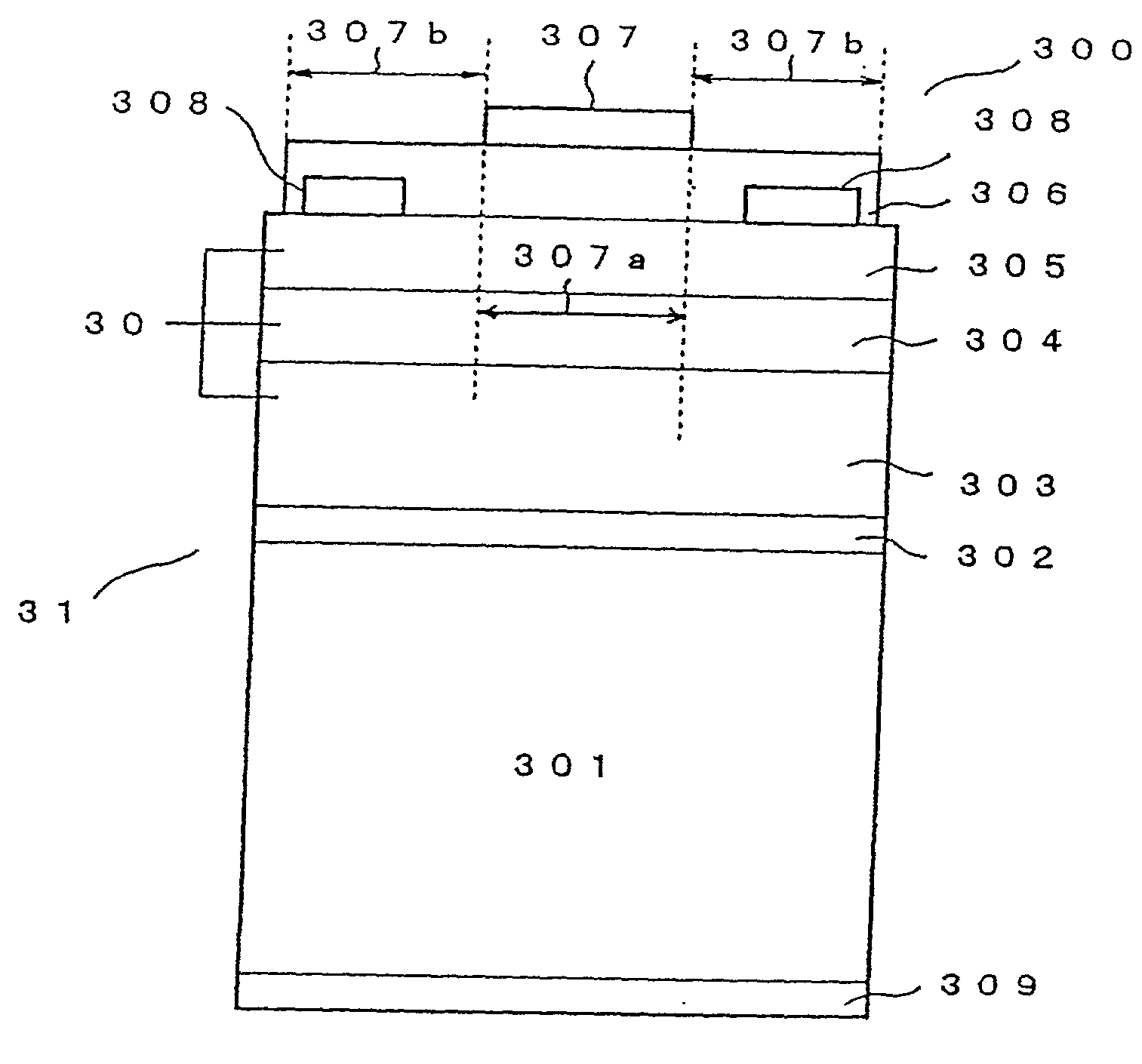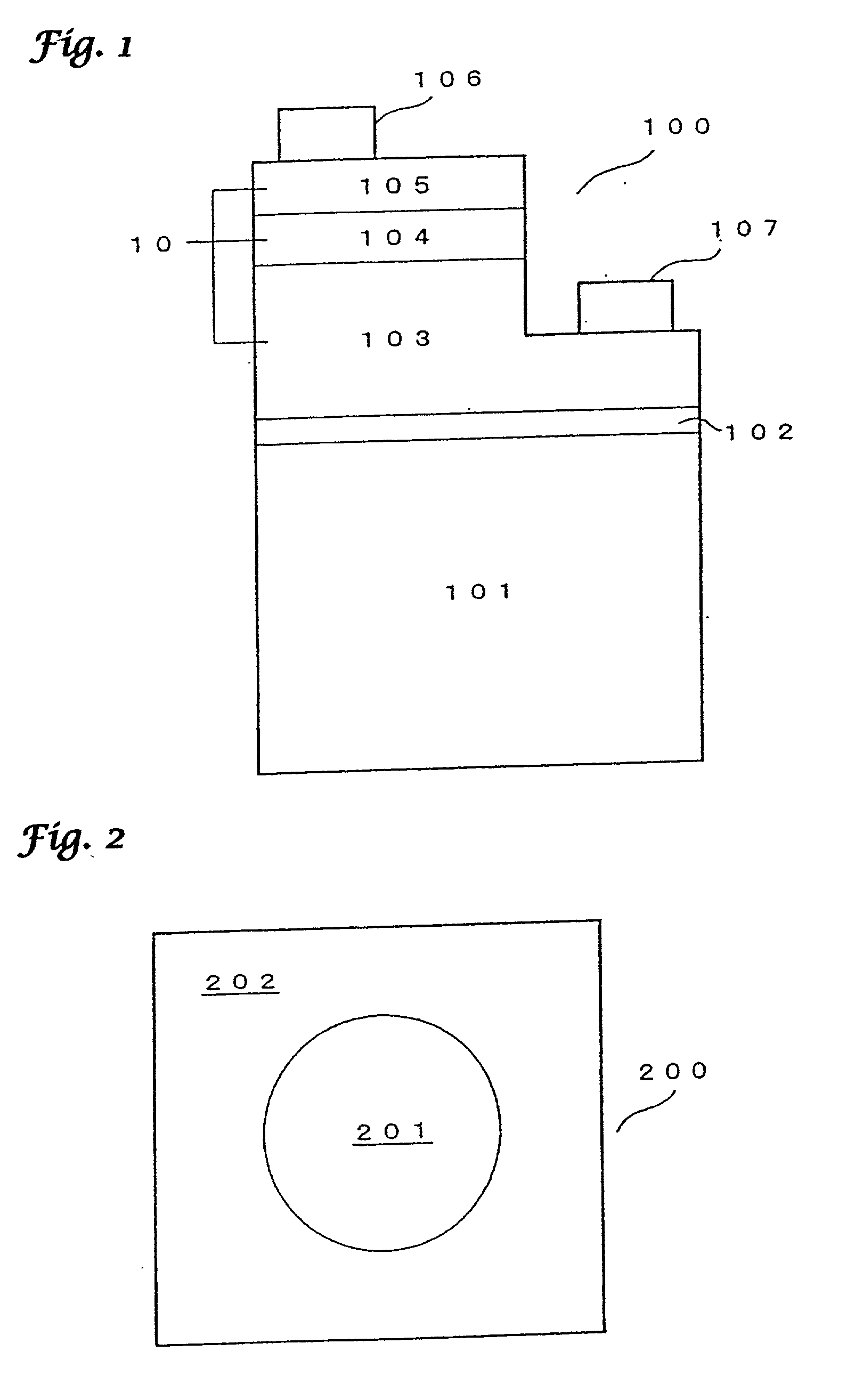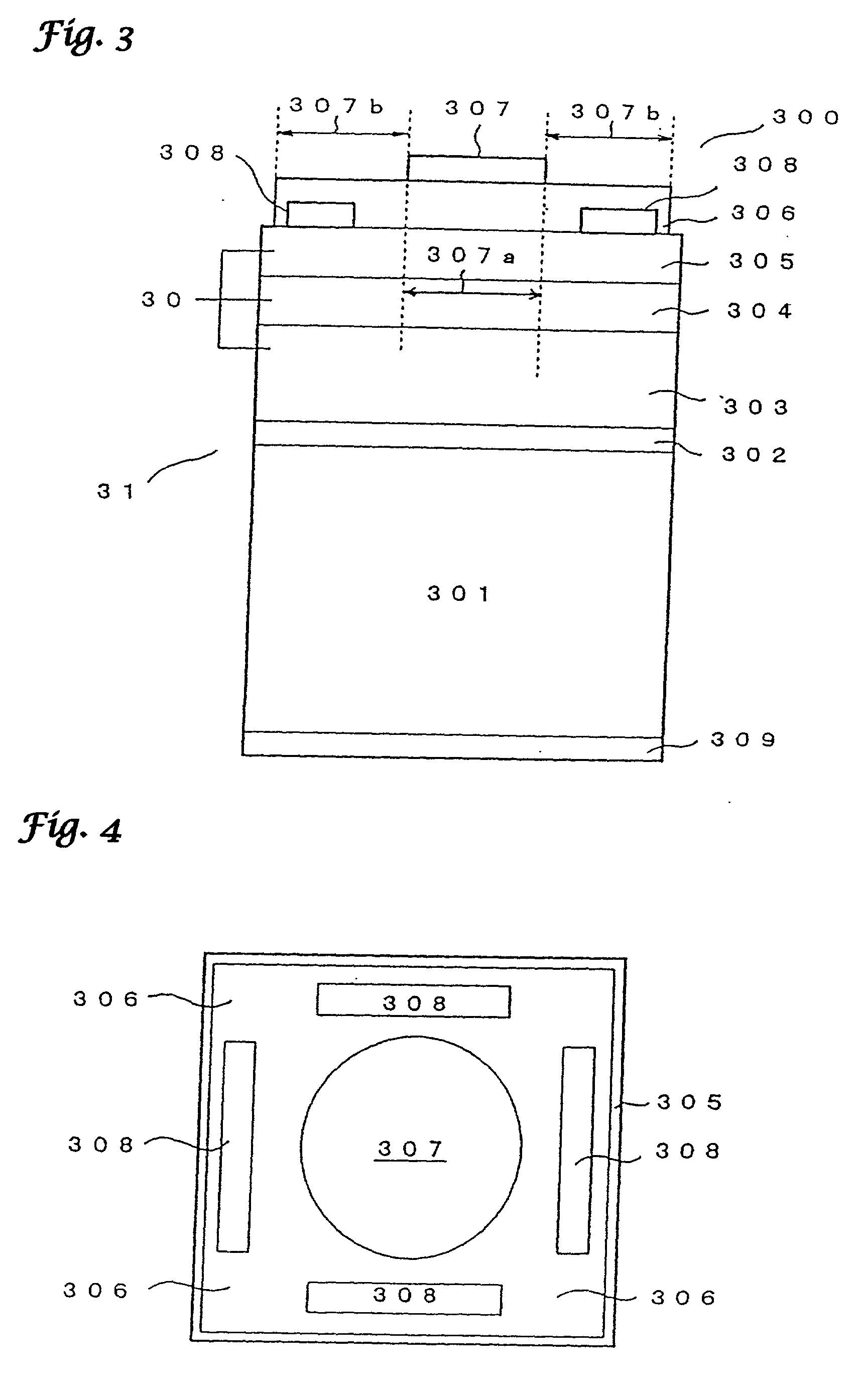Group-III nitride semiconductor light-emitting diode, light-emitting diode lamp, light source, electrode for group-III nitride semiconductor light-emitting diode, and method for producing the electrode
a technology of semiconductor light-emitting diodes and nitride semiconductors, which is applied in the direction of semiconductor/solid-state device manufacturing, semiconductor devices, electrical devices, etc., can solve the problems of inability to achieve stable formation of buffer layers and disadvantageous failure of upper layers to have flat surfaces, etc., and achieves small contact resistance and easy display
- Summary
- Abstract
- Description
- Claims
- Application Information
AI Technical Summary
Benefits of technology
Problems solved by technology
Method used
Image
Examples
example 1
[0075] FIG. 6 is a schematic plan view of a group-III nitride semiconductor LED 600 of Example 1. FIG. 7 is a schematic sectional view cut along the broken line A-A' of LED 600 shown in FIG. 6.
[0076] LED 600 was fabricated based on a stacked layer structure 61 comprising a substrate 601 having provided thereon the following layers 602 to 605:
[0077] (1) a substrate 601 composed of a boron (B)-doped Si single crystal having a p-type conductive (100) face,
[0078] (2) a low-temperature buffer layer 602 comprising a Zn-doped p-type boron phosphide (BP) and having a layer thickness of about 20 nanometer (nm), which was grown at 350.degree. C. by a normal pressure (atmospheric pressure) MOCVD method in a reaction system of triethylborane ((C.sub.2H.sub.5).sub.3B) / phosphine (PH.sub.3) / hydrogen (H.sub.2) while setting the feed ratio (V / III ratio) between PH.sub.3 and (C.sub.2H.sub.5).sub.3B to about 300,
[0079] (3) a Zn-doped p-type boron phosphide (BP) single crystal layer 603 having a layer ...
example 2
[0094] In Example 2, the present invention is described by referring to a group-III nitride semiconductor light-emitting diode 700 different in the configuration of surface ohmic electrodes 609 from Example 1 and manufactured using the same stacked layer structure 61 as in Example 1.
[0095] FIG. 8 shows a schematic plan view of a group-III nitride semiconductor LED 700 according to Example 2. In FIG. 8, the same portions as those shown in FIG. 6 are indicated by the same reference numbers as in FIG. 6 and not described here.
[0096] In the group-III nitride semiconductor LED 700 of Example 2, a frame-shaped surface ohmic electrode 609 having a stratified structure consisting of a gold (Au) lower layer and a nickel oxide (NiO.sub.X, where X is about 1) upper layer was provided on the open light-emitting region 607b in the periphery of the pad electrode 607. The outer circumference of the frame-shaped surface ohmic electrode 609 had a square form by reflecting the outer shape of the squa...
example 3
[0108] In Example 3, a group-III nitride semiconductor LED was fabricated using a stacked layer structure obtained by stacking gallium nitride phosphide (GaN.sub.1-XP.sub.X, where X=0.03) which becomes an ohmic contact layer 610, on the n-type gallium nitride (GaN) layer 605 constituting the uppermost layer of the stacked layer structure described in Example 1. FIG. 9 shows a schematic sectional view of the group-III nitride semiconductor LED according to Example 3. In FIG. 9, the same constituent elements as those shown in FIG. 7 are indicated by the same reference numbers and not described here.
[0109] The n-type gallium nitride phosphide (GaN.sub.0.97P.sub.0.03) having a phosphorus compositional ratio of 3% and constituting the ohmic contact layer 610 was grown at 980.degree. C. by a reduced-pressure MOCVD method in a reaction system of trimethylgallium ((CH.sub.3).sub.3Ga) / ammo-nia (NH.sub.3) / phosphine (PH.sub.3) / hydrogen (H.sub.2). The carrier concentration of the ohmic contact ...
PUM
 Login to View More
Login to View More Abstract
Description
Claims
Application Information
 Login to View More
Login to View More - R&D
- Intellectual Property
- Life Sciences
- Materials
- Tech Scout
- Unparalleled Data Quality
- Higher Quality Content
- 60% Fewer Hallucinations
Browse by: Latest US Patents, China's latest patents, Technical Efficacy Thesaurus, Application Domain, Technology Topic, Popular Technical Reports.
© 2025 PatSnap. All rights reserved.Legal|Privacy policy|Modern Slavery Act Transparency Statement|Sitemap|About US| Contact US: help@patsnap.com



